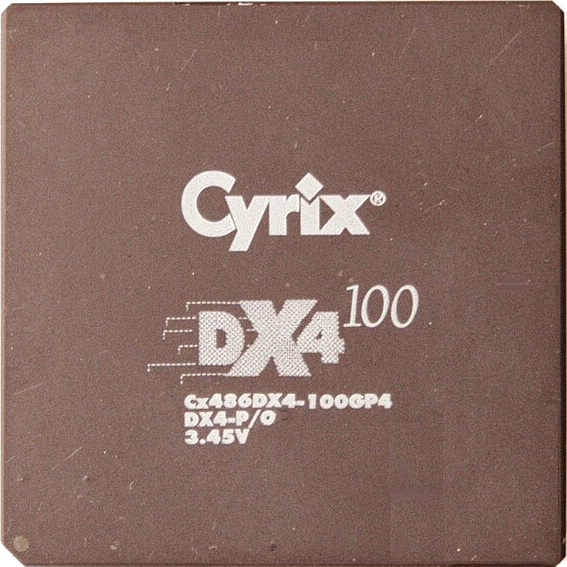Announcement by the creator: https://forum.syncthing.net/t/discontinuing-syncthing-android/23002
Unfortunately I don’t have good news on the state of the android app: I am retiring it. The last release on Github and F-Droid will happen with the December 2024 Syncthing version.
Reason is a combination of Google making Play publishing something between hard and impossible and no active maintenance. The app saw no significant development for a long time and without Play releases I do no longer see enough benefit and/or have enough motivation to keep up the ongoing maintenance an app requires even without doing much, if any, changes.
Thanks a lot to everyone who ever contributed to this app!
oof. All I can do is thank you for the hard work that anybody’s put into this, and I’m sad to see it go because I’ve been using this with my keypass for probably about a year now.
Really hoping the Graphene OS lawsuit allows for some Options to open up again!
Can you share what lawsuit you’re referring to? 🙏
Looks like they still haven’t launched it yet. They just mentioned they would in this Ars Technica article.
I’ve been using Syncthing-Fork (on F-Droid) for the extra features it has. I wonder if that developer will be able to continue.
Somene asked in an issue about this subject, maybe answers are gonna be posted here : https://github.com/Catfriend1/syncthing-android/issues/1149
Lo he estado usando en dos dispositivos para sincronizar bóvedas de Obsidian y su funcionamiento era un poco errático.
Después de los últimos problemas, lo tenía inactivo a la espera de una nueva configuración, un proceso que me parece tedioso e innecesariamente complejo. Cuando menos poco amigable.
Mientras tanto estaba usando el cable USB para volcar los archivos en el PC.
Ahora quizás tendré que buscar otro sincronizador para Android?
Android no me gusta. ¿Por qué fracasó el Linux para Tablets?Quiero mi Tablet y mi teléfono con Linux.
Igual te interesa echarle un ojo a postmarketOS. Están haciendo un sistema operativo para teléfonos forkeado directamente de Alpine Linux, en vez de AOSP
A mi me funciona a la perfección desde el primer día. Tengo un servidor donde está toda la data que quiero sincronizada, también en mi celular, laptop y PC. Honestamente funciona fenomenal. ¿Que es lo que era errático? Me causa curiosidad.
Pues en determinadas ocasiones se conectaba, en otras no. Siempre se trataba de un vuelco de archivos, que normalmente elaboraba en el dispositivo móvil y volcaba en una carpeta de ‘entrada’ para luego distribuirlos en los directorios apropiados de la bóveda de Obsidian.
La verdad es que sopechaba que no lo tenía bien configurado y por eso, la ultima vez que me falló lo dejé para tomar un tiempo en revisar la configuración.
Encuentro tambien dificultad con los nombres de dispositivos, una serie de números excesivamente larga que debería oder abreviarse con un alias: “MiTablet”, o algo sí.
Si os va tan bien a todos, es posible que está haciendo algo mal. Tenía pendiente estudiar el tema más a fondo. Ahora no sé si hacerlo. ¿El comunicado signfica que desaparece de Google Play y sigue en F-Droid? Creo que decía que dejaba de actualizarlo porque sin Gogle-Play no le resulta rentable.
En fin, quizás es el momento de buscar otra solución similar o seguir con el cable. .(Parece que es terminal para todo. La persona que le da mantenimiento solo va a hacer una última actualización en Diciembre (al menos eso dice) pero igual hay una bifurcacion del original mejor mantenida qué si esta en F-droid y en github.
La verdad es que a mi me dio mucho trabajo adaptarme a como funciona Syncthing, pero cuando al fin lo entendí, superó fácil. El tema con los ID de los folders y los dispositivos es que es mucho más seguro tenerlos así, ya que uno puede equivocarse con nombre y/o fallas al escribir, esto ayuda a reducir las posibilidades de errores.
Sad day indeed, bitwarden going shady and this.
What did bitwarden do??
I don’t get it.
How is that a problem to people wanting to work on or work with Bitwarden? Or am I misunderstanding the wording on it?
It just seems to say that you cannot rip this SDK out to use it on something else. Which makes sense as far as an internal library goes, at least on the surface?
It doesn’t make sense for an internal library for an open source application, it that case it’s not open source.
I think it was made by mistake. They will more likely remove that dependency
Perhaps the hard dependency was a mistake, but not them moving more and more code to their proprietary library. It appears that their intent is to make the client mostly a wrapper around their proprietary library, so they can still claim to have an open source GPLv3 piece of software. What good is that client if you can only use it in conjunction with that proprietary library, even if you can build it without that dependency?
Instead of open core I’ll call this popular approach “open skin”.
mostly a wrapper around their proprietary library
I’m not familiar with exactly what Bitwarden are doing, but Nvidia are doing something similar to what you described with their Linux GPU drivers. They launched new open-source drivers (not nouveau) for Turing (GTX 16 and RTX 20 series) and newer GPUs. What they’re actually doing is moving more and more functionality out of the drivers into the closed-source firmware, reducing the amount of code they need to open source. Maybe that’s okay? I’m not sure how I feel about it.
That says that it is a bug.
It says the build error is a bug, not the inclusion of proprietary code.
To be fair, the project page says this:
The password manager SDK is not intended for public use and is not supported by Bitwarden at this stage. It is solely intended to centralize the business logic and to provide a single source of truth for the internal applications. As the SDK evolves into a more stable and feature complete state we will re-evaluate the possibility of publishing stable bindings for the public. The password manager interface is unstable and will change without warning.
So there are two ways this can go:
- they complete the refactor and release it as FOSS
- they complete the refactor and change the clients to be proprietary
I’m going to stick with them until I see what they do once they complete the refactor.
Ahh those fuckers.
Just got into using Syncthing for my home network, was thinking I should add it to my phone. Makes sense it dies the instant I consider it
this is your fault.
I’m a fucking albatross, I know… Or whatever that sailor’s curse bird is I forget. A crested wank.
The way i understand it, this stops maintenance for Syncthing, but Syncthing-fork in fdroid will continue its development and support as usual. Both show if you do a Syncthing search in fdroid. The fork is more up to date with features.
Lol, I was also looking at installing it last weekend.
I guess this thing is on the same connection as my stock choices.
My advice is to be less like me
It seems to be working for other people
Consider yourself lucky, I feel the pain of seeing the end of years of a loving relationship.
Fyi the syncthing-fork guy (catfriend1) who’s still updating has a donating button on F-droid via Liberapay. It’s up to you if your financial situation allows you to donate, but the more of us help the remaining developers for their time, in particular those of us that rely so much on their work, the better off we’ll be. Let’s give them a little motivation to keep working on this.
FYI2 syncthing-fork (as written and confirmed in this thread) has an import button for your folders from syncthing Android.
PayPal though. Is there another way to donate to this superhero?
I tried looking around but this humble soul doesn’t have much in the way of receiving donations. I suggest contacting him via https://github.com/Catfriend1 to ask for an alternative and if he gets back to you, share it here for other people who dislike paypal.
Great idea.
Not sure I understand the reasoning for discontinuing. Google standing in the way? Not enough f-droid users benefiting from it? It didn’t see development cause it was already feature complete?
As they said the app needs ongoing maintenance.
I’ve installed it from F-droid but still. Fuck google. They really do need breaking up.
I heavily rely on Syncthing. Does anyone know what the outlook is for Syncthing-fork, or what the likelihood is of someone taking on maintenance of this version?
The way i understand it, this stops maintenance for Syncthing, but Syncthing-fork in fdroid will continue its development and support as usual. Both show if you do a Syncthing search in fdroid. The fork is more up to date with features.
Peachy. Sounds like there’s nothing to worry about then (from a user POV).
Good idea to send donations to the syncthing-fork devs to keep it alive though.
Yah I mean the notice for the storage access has only been five years. How can they do that.
Oh No! This is terrible news. This IMHO is one of the most irreplaceable projects out there. I don’t know of another cross-platform local file syncing app that comes anywhere close to this. I hope that it can continue even if it’s not through the Play Store.
Google seems to be torpedoing open source developments with a number of decisions lately. Maybe they see F-Droid as a threat now that EU is making them open competition? Maybe they just don’t care.
Hoping it remains viable for a long time without updates. Syncing my KeePass database is really key for me. I need to fluidly add and read passwords from at least 3 devices.
The way i understand it, this stops maintenance for Syncthing, but Syncthing-fork in fdroid will continue its development and support as usual. Both show if you do a Syncthing search in fdroid. The fork is more up to date with features.
Syncthing-fork on fdroid.
With today’s BitWarden drama, I planned to use KeePass with SyncThing for like an hour before seeing this :(((
Got any links to the bitwarden drama? I missed it.
Thanks for that. Looks like I’ll be keeping an eye out for replacements just in case.
Bitwarden’s last update made the iOS categorically worse and impacted the Pin unlock functionality on Linus desktop. Guess I’m migrating to Proton’s offering along with the rest of their suite. Hope they don’t go down the enshittification rabbit hole anytime soon.
That sucks. But I think this is specifically about their open source licensing.
Hope they don’t go down the enshittification rabbit hole anytime soon.
Apparently they’re transitioning to a non-profit business model
I use bitwarden. Are they not good anymore? Data Breach?
Here you go https://lemmy.ndlug.org/post/1268531
I too use Bitwarden, self-hosted. What’s up with Bitwarden? I haven’t heard anything (other than some of the Keypass master race sometimes throwing dirt at it).
deleted by creator
Thanks. I guess it’s about time for me to start looking at being part of the master race crowd then. I appreciate the link.

They couldn’t take the heat in Github 🤣
This is one of the many things I use Syncthing for.
Is webDAV not good enough for that? I use keepass via webDAV feature of the nextcloud (I know some think it is bloated) but I guess there are other lightweight webDAV solutions…
I’ve used both. NC android app doesn’t sync and one needs to host the entire platform. When using generic webDAV one still needs a dedicated sync solution.
I self host NC and still prefer SyncThing for keeping my KeePass database updated and fresh across devices.
I see, my app that I use for keepass has integrated webDAV sync where I can point it to a keepass file on the webDAV server (strongbox iOS) I just thought android keepass apps should have such feature as well.
The iOS app of NC is slow as well, and not good enough for using to sync keepass files, but the Linux app seems to be good enough.
And yea, just learned, that sync thing apparently works without a server but all P2P? That is 100% killer feature 😃👌🏻
IIRC Keepass2Android does have that feature.
Fair point. Does it cache the database for when one’s of the grid?
Yup!
The NC app (and DAVx5 contacts and calendar sync for that matter) do provide a WebDAV mount point on android so I suppose I could access content directly. And someone mentioned there’s DAV support in some clients as well. Perhaps I’m just overly worried about losing access, with Syncthing the files are on my device no matter if my self-hosted home solution or internet goes down.
But the no-server cloud function of Syncthing is absolutely a killer feature. And very important as a simple and easy privacy solution for inexperienced users IMO. I was hoping for a better windows solution, not a deprecation of device support.
Speaking of servers, I also run a Syncthing server so I can sync files without having two user devices online at the same time. Syncthing natively support encryption at rest (files on disk) so it satisfies my absolute demand of never storing unencrypted personal files on a server. Even if the server is disk encrypted, in my own home and only accessibly through VPN…
Encrypted password database in encrypted storage on an encrypted storage only accessibly by encrypted connection via an encrypted connection… Maybe I’m overdoing it. Who am I kidding, I’d get a rottweiler to guard my home server if I could.
Who gives a shit about play? How much do I have to pay you to update it in fdroid still?
Phones are becoming less and less interesting by the day.
Once they get to the point were all of the options that don’t require incredibly inconvenient sacrifices in functionality to maintain the interesting stuff like a video game console then that will kill interest in the market for me.
If I can’t do anything besides basic smart phone crap I might as well just buy whatever has a good camera once every half decade or so and be done with it. So whatever top end thing Samsung or Apple are putting out.
I’m not sure Google has fully thought through what it means to just be a worse version of what Apple puts out, but with more ads.
You will lose interest in the market, but will keep buying? Did I misunderstand something?
I think goes from obsession to possesion maybe, ur kinda tied to a phone for a lot of services these days and 5 years is at least more reasonable than every year or 2
You’re right, and if we think about it, companies are well aware of that, and that’s why they don’t care for offering anything beyond the basic and walled experience, because we will buy anyway.
Smartphone design is mostly a solved problem. Take today’s screens and processors and throw in a few features from the past (removable storage, IR blaster, and headphone jack) and you have a 10-year phone.
I used to get a new phone every year because phone got way better each generation.
My phone is top-tier from 2021 (Z Fold 3), and I have had zero temptation from the newer versions. All they really have is faster processing, but since all apps are designed to run well on budget phones from 5 years ago, there’s no reason to upgrade.
since all apps are designed to run well on budget phones from 5 years ago, there’s no reason to upgrade.
5 years, maybe, but any more is stretching it. And not getting system upgrades anymore is problematic. Unless you own a particular model of phone, de-Googled Android can be hard to come by.
For example, I have a 7-year old Pixel C. By the time Google stopped using system updates for it, I wasn’t wanting them as every release made the device slower and more unstable. After some effort, I was finally able to install a version of Lineage, which itself has problems including no updates in years. There’s a lot of software that is incompatible with my device, both from Aurora and FDroid.
Android isn’t Linux; Google doesn’t care about maintaining backward compatability on old devices, much less performance, and there’s no army of engineers making sure it is because there’s a served running in walled-up closet no one can find.
Google deprecates features and ABIs in Android, apps update and suddenly aren’t backwards compatible.
5 years, maybe. The entire industry is addicted to users upgrading their phones, and everyone gets a piece of that pie. There’s no actors, except perhaps app developers, who have any interest in keeping old phones running. Telecoms upgrade their wireless network - the internet connection in my 8 y/o car, and half its navigation features, died the day AT&T decided to stop supporting 3G; Phone makers make no money if you don’t buy new phones; and maintaining backwards compatibility costs Google money which they’d rather siphon off to shareholders.
Phone makers make no money if you don’t buy new phones
Maybe they should make a new phone thats desirable then. I’m still running on a phone from 2016 because there’s no modern one that wouldn’t lose me functionality that I use all the time. Anything I buy would be a downgrade.
😂I upgraded from, I think 6 year old iPhone X, to an refurbished iPhone 12 mini
(Love how it is a fast phone which can be used singlehanded)
Will use it, hopefully until we have a viable Linux alternative 😂 one can dream
I’m 100% with you. I want a Light Phone with a changeable battery and the ability to run 4 non-standard phone apps that I need to have mobile: OSMAnd, Home Assistant, Gadget Bridge, and Jami. Assuming it has a phone, calculator, calendar, notes, and address book - the bare-bones phone functions - everything else I use on my phone is literally something I can do probably more easily on my laptop, and is nothing I need to be able to do while out and about. If it did that, I would probably never upgrade; my upgrade cycle is on the order of every 4 years or so as is, but if you took off all of the other crap, I’d use my phone less and upgrade less often.
The main issue with phones like the Light Phone is that there are those apps that need to be mobile, and they often aren’t available there.
My Galaxy Note 8 is a backup phone. It was a flagship when it launched, yeah. But even so, it’s 7 years old, the last update for it was over 2.5 years ago, and it’s still chugging along like a champion.
I think Android updates intentionally made the Pixel C slower. It was a noticeable process, up to the point they stopped supporting it. I’d downgrade to an earlier version, but there’s such poor support in Lineage, I’m barely able to run the version that’s on there now.
Such a shame, because it’s still an amazingly beautiful device.
I’m almost going full circle now, I’m buying a camera and a Music player to use as separate devices from my phone. Not only smartphones are getting expensive as hell, but the usability is actually getting worse IMHO.
And why is it so fucking awful to setup an automated pipeline to deploy smartphone apps (Android and iOS)?
Just let me run Qubes OS on my phone already and all the problems are solved.
Yea, I want a small linux PC with touch screen, and mobile Internet 🙃 sadly, there seem none to be around with enough battery and enough computing power and a good USB C with working PD and OTG (ideally a alt mode video protocol like hdmi/DP/thunderbolt as well)
One may dream 😂😅
I can only hope the company makes the iOS client (Möbius) decides they need syncthing to continue and decide to get behind it.
As I recall, they use Syncthing as a solution in their business, this would be a big-break for them.
It says “unlimited file sync is a $5 in-app unlock” so I’m guessing they can make money. Main problem is the apple developer fees that will eat the profit of the first 25 sales each year
Maybe I’m misremembering, but I thought they used Syncthing as part of a business not directly related to Möbius - as a vendor supplying data management solutions to other companies. I suspect Möbius came out of need for their clients.
I can picture the vendor website in my head, just wish I could remember who it was for sure.
I would eagerly pay for syncthing, it’s that important to me. I keep hundreds of gigs moving around using it. It’s on my annual donate list already, but clearly that’s insufficient.
Maybe the Syncthing-Fork dev will keep it going.
iOS is already more restricted on app sandboxes, and Möbius can handle it in the paid version.
On Android, Resilio somehow has more file access than Syncthing, even without root (it can read/write to either SD card root, while Syncthing can only write to a subfolder of SD0, and can’t write anywhere of an external SD). So there’s something going on.
OH NO, I hope the fork will continue for a bit otherwise I’m so cooked 🥶🥶🥶
Agreed. Horrible news.
Hoping Syncthing-Fork will continue.
For the F-droid enabled users, it seems there’s a Syncthing app in the Termux repos:
~ $ apt show syncthing Package: syncthing Version: 1.28.0 Maintainer: @termux Installed-Size: 26.4 MB Homepage: https://syncthing.net/ Download-Size: 7857 kB APT-Sources: https://packages.termux.dev/apt/termux-main stable/main aarch64 Packages Description: Decentralized file synchronizationAlso a fork that has been ongoing for years, syncthing-fork.
Holy shit. I can use apt to install packages on my phone securely?? Please tell me more
Termux (on F-droid) is a userland environment that runs on top of your Android device’s kernel. It has Debian/Ubuntu-like package management system that pulls from repos maintained by the termux team. If the package is available for aarch64, its probably available in the termux repos. Its not so much of an app as it is an alternate userland that runs on top of the same kernel, but can interact with Android a couple of different ways.
The main Termux app gets you a basic command line environment with the usual tools included in a headless Linux install. From there you can select your preferred repos, do package updates, installs, etc, just like on a desktop or laptop. You could even install a desktop environment and use RDP to access it.
Then there are some companion apps that are useful:
- Termux:boot is like a primitive rc.d feature that executes upon boot up any scripts found in the termux ~/.termux/boot directory. You could use the feature to launch an SSH server, or perhaps start your syncthing service when the phone starts up.
- Termux:Tasker is a Tasker plugin that allows Tasker to launch scripts in .termux/tasker based on whatever triggers or profiles you define in Tasker. For example, stop or start selected services when connected to your home WiFi
- Termux:API is a set of termux utilities to interact with the Android API, and do things like send messages, interact with the camera or battery, and manipulate system settings.
So you could install the syncthing package in Termux and (after setting up Termux access for your internal storage) configure it to sync folders from your phone to wherever syncthing syncs. You’d set up a start script under Termux:boot to launch it when your phone starts, or Tasker to start/stop the service on your home WiFi.
Yeah, seems like this is what some people are using. They said you can use Tasker to run it in the background.
So is this the same as installing on the desktop? Run the service and then http to home to configure?
Does systemd for daemons work on Android?
























